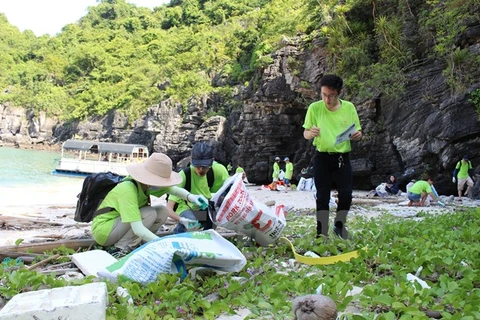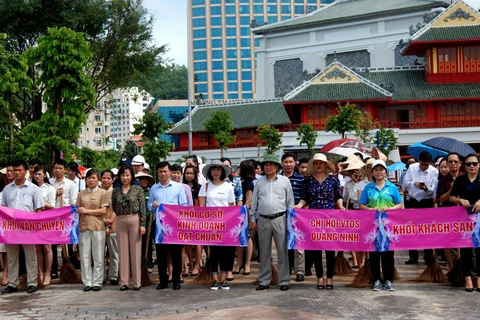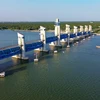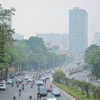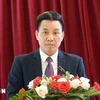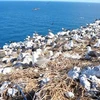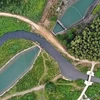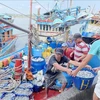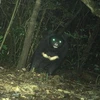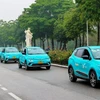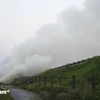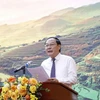Quang Ninh (VNA) – More than 100 volunteers including students, office workers and representatives from businesses and Vietnamese and international NGOs participated in a coastal clean-up in Vung Ha area, Ha Long city, the northern province of Quang Ninh on January 10.
US Ambassador to Vietnam Ted Osius also joined the event, which was co-organised by the International Union for Conservation of Nature (IUCN) and the Ha Long city People’s Committee, and funded by the US Agency for International Development (USAID).
“Millions of tourists visit Ha Long Bay every year. It is Vietnam’s top tourist destination. This is an opportunity and a challenge. Tourism adds to the local economy but can also have negative environmental impacts. We must act together to preserve and protect the bay,” said Ted Osius.
The event aimed to raise awareness of the vital need of improving environmental protection in Vietnam in general and in the world heritage site Ha Long Bay in particular, in order to maintain the quality of tourist destinations that generate jobs and significant state revenue and to promote green practices from businesses, according to IUCN.
The results from the clean-up will be posted on the International Coastal Cleanup (ICC) website and serve as data for environment research institutes, said IUCN.
Pham Thi Thuy Duong, a final year student at the University of Social Sciences and Humanities, said “I was shocked to see the huge amount of trash on the beach, given that it didn’t look bad while we were travelling by boat to the area. I wondered how we could deal with that but eventually with the joint effort, we made it.”
Duong also hoped she would have more opportunities like this to contribute to the clean-up of not only Ha Long but also other areas.
Volunteers collected a total of about 400 kg of trash, with the majority comprising foam pieces and plastic bags and bottles. This is the second clean-up held by IUCN. The first one was held in July last year, resulting in a collection of more than 700 kg of trash.
Regarding the harm that foam waste causes to the environment, the local authority banned the use of foam in aquaculture and more than 90 percent of households in the area have stopped using this, Le Lam Tuan from the Ha Long site management board.-VNA
US Ambassador to Vietnam Ted Osius also joined the event, which was co-organised by the International Union for Conservation of Nature (IUCN) and the Ha Long city People’s Committee, and funded by the US Agency for International Development (USAID).
“Millions of tourists visit Ha Long Bay every year. It is Vietnam’s top tourist destination. This is an opportunity and a challenge. Tourism adds to the local economy but can also have negative environmental impacts. We must act together to preserve and protect the bay,” said Ted Osius.
The event aimed to raise awareness of the vital need of improving environmental protection in Vietnam in general and in the world heritage site Ha Long Bay in particular, in order to maintain the quality of tourist destinations that generate jobs and significant state revenue and to promote green practices from businesses, according to IUCN.
The results from the clean-up will be posted on the International Coastal Cleanup (ICC) website and serve as data for environment research institutes, said IUCN.
Pham Thi Thuy Duong, a final year student at the University of Social Sciences and Humanities, said “I was shocked to see the huge amount of trash on the beach, given that it didn’t look bad while we were travelling by boat to the area. I wondered how we could deal with that but eventually with the joint effort, we made it.”
Duong also hoped she would have more opportunities like this to contribute to the clean-up of not only Ha Long but also other areas.
Volunteers collected a total of about 400 kg of trash, with the majority comprising foam pieces and plastic bags and bottles. This is the second clean-up held by IUCN. The first one was held in July last year, resulting in a collection of more than 700 kg of trash.
Regarding the harm that foam waste causes to the environment, the local authority banned the use of foam in aquaculture and more than 90 percent of households in the area have stopped using this, Le Lam Tuan from the Ha Long site management board.-VNA
VNA


